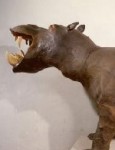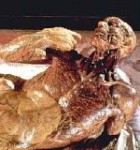Various generations of the Medici family had accumulated and gathered with passion in their private collections, in addition to great treasures, also a considerable patrimony of natural treasures, such as fossils, animals, minerals and exotic plants.
On the basis of such materials as well as the acquisitions of new finds of every type, including a vast collection of books from all over Europe, the enlightened Peter Leopold of Lorraine, with the aid of the abbot Felice Fontana (1730-1805), created a Museum of Physics and Natural History for the public. To such ends, he bought a block of buildings near the Pitti Palace in 1771, in which “La Specola” still has its home today, despite notable modifications and adaptations. The Museum was officially inaugurated in 1775 and it was directed by Fontana until his death.
Up to the early 19th century, it remained the only scientific Museum in the world created for the public and addressed towards all sorts of inquisitive people, with opening hours, guides and caretakers, as a museum is still conceived today. The vicissitudes of the collections are extremely complicated, especially because of the transfers of the anthropological, mineralogical, botanical and paleontological finds as well as the physics, chemistry and astronomy equipment to other university museums and institutes that occurred between 1860 and 1930.
Currently the public is admitted into 34 rooms, 24 of zoology and 10 of wax modeling. In the zoological sections, there are both recently acquired as well as ancient taxidermy specimens, like the hippopotamus which, as it seems, was given to the Grand Duke in the second half of the 1700’s, and lived for some years in the Boboli Gardens. The museum can especially boast its collection of anatomical waxworks, a precious testimony to an art which in Florence was first begun by Ludovico Cigoli (1559-1613), an important Florentine artist of that period, and had its moment of maximum splendor and scientific-technical accuracy in the 1700’s.









